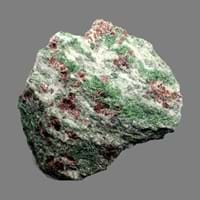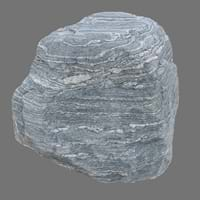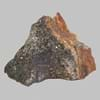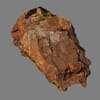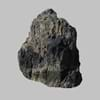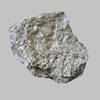Definition
Eclogite is an extreme metamorphic rock, formed by regional metamorphism of basalt rock under very high pressure and temperature
Migmatite is typically a granitic rock within a metamorphic host rock which is composed of two intermingled but distinguishable components
Origin
Unknown
Southern Alps, France
Discoverer
René Just Haüy
Jakob Sederholm
Etymology
From French, Greek eklogē selection with reference to the selective content of the rock + -ite1
From the Greek word migma which means a mixture
Class
Metamorphic Rocks
Metamorphic Rocks
Sub-Class
Durable Rock, Medium Hardness Rock
Durable Rock, Medium Hardness Rock
Group
Not Applicable
Not Applicable
Other Categories
Fine Grained Rock, Opaque Rock
Coarse Grained Rock, Fine Grained Rock, Medium Grained Rock, Opaque Rock
Color
Black, Brown, Colourless, Green, Grey, Pink, White
Black, Bluish - Grey, Brown, Brown- Black, Dark Greenish - Grey, Dark Grey to Black
Durability
Durable
Durable
Scratch Resistant
Yes
Yes
Appearance
Dull, Banded and Foilated
Dull, Banded and Foilated
Interior Uses
Decorative Aggregates, Interior Decoration
Countertops, Flooring, Kitchens
Exterior Uses
Paving Stone, Garden Decoration
As Building Stone, As Facing Stone
Other Architectural Uses
Curbing
Curbing
Construction Industry
Not Yet Used
As Dimension Stone, Cement Manufacture, for Road Aggregate, Making natural cement
Medical Industry
In Chemical and Pharmaceutical Industry, Medicines and Cosmetics
Not Yet Used
Antiquity Uses
Artifacts
Artifacts
Commercial Uses
Creating Artwork, Gemstone
Cemetery Markers, Jewelry, Tombstones, Used to manufracture paperweights and bookends
Types
Not Available
Diatexites and Metatexites
Features
Available in Lots of Colors and Patterns, Generally rough to touch, Is one of the oldest rock
Generally rough to touch, Is one of the oldest rock
Archaeological Significance
Monuments
Not Yet Used
Not Yet Used
Famous Monuments
Not Applicable
Not Applicable
Sculpture
Not Yet Used
Not Yet Used
Famous Sculptures
Not Applicable
Not Applicable
Figurines
Not Yet Used
Not Yet Used
Formation
Eclogite forms from high-pressure metamorphism of mafic igneous rocks mainly, basalt or gabbro as it plunges into the mantle in a subduction zone.
Migmatites form by high temperature regional and thermal metamorphism of protolith rocks where rocks melt partially due to high temperature.
Mineral Content
Amphibole, Coesite, Corundum, Dolomite, Garnet, Kyanite, Lawsonite, Paragonite, Phengite, Pyroxene, Quartz, Rutile, Zoisite
Biotite, Chlorite, Feldspar, Garnet, Graphite, Hornblade, Micas, Muscovite or Illite, Quartz, Quartzite, Silica, Zircon
Compound Content
Aluminium Oxide, NaCl, CaO, Carbon Dioxide, Iron(III) Oxide, Magnesium Carbonate, MgO, Sodium Oxide, Potassium, Sodium
Aluminium Oxide, NaCl, CaO, Carbon Dioxide, Iron(III) Oxide, FeO, Potassium Oxide, Magnesium Carbonate, MgO, MnO, Phosphorus Pentoxide, Silicon Dioxide, Titanium Dioxide
Types of Metamorphism
Not Applicable
Burial Metamorphism, Cataclastic Metamorphism, Regional Metamorphism
Types of Weathering
Mechanical Weathering
Biological Weathering, Chemical Weathering, Mechanical Weathering
Types of Erosion
Chemical Erosion, Sea Erosion
Chemical Erosion, Glacier Erosion, Water Erosion, Wind Erosion
Grain Size
Fine Grained
Medium to Fine Coarse Grained
Fracture
Not Available
Irregular
Porosity
Less Porous
Very Less Porous
Luster
Subvitreous to Dull
Dull to Pearly to Subvitreous
Toughness
Not Available
1.2
Specific Gravity
2.86-2.87
2.65-2.75
Transparency
Opaque
Opaque
Density
3.2-3.6 g/cm3
Not Available
Resistance
Heat Resistant
Heat Resistant, Pressure Resistant
Deposits in Eastern Continents
Asia
India, Kazakhstan, Kuwait, Russia, South Korea, Thailand, Turkey
China, India, Iran, Iraq, Kazakhstan, Kyrgyzstan, Mongolia, Russia
Africa
Ethiopia, Morocco, South Africa
Cameroon, Ethiopia, Ghana, Kenya, Madagascar, Morocco, Mozambique, Namibia, Nigeria, Tanzania, Togo
Europe
France, Germany, Italy, Norway, Scotland
Albania, Austria, Bosnia and Herzegovina, Finland, France, Georgia, Germany, Hungary, Italy, Kosovo, Monaco, Norway, Poland, Romania, Serbia, Slovakia, Slovenia, Sweden, Switzerland, Ukraine, United Kingdom
Others
Greenland
Not Yet Found
Deposits in Western Continents
North America
Canada, Costa Rica, Panama, USA
Canada, Costa Rica, Cuba, Mexico, Panama, USA
South America
Argentina, Brazil, Colombia, Ecuador
Argentina, Bolivia, Brazil, Chile, Colombia, Ecuador, Peru, Venezuela
Deposits in Oceania Continent
Australia
Central Australia, New Zealand, Queensland
New South Wales, New Zealand, Queensland, Victoria
